As lâminas industriais desempenham um papel crucial na fabricação, corte e processamento de materiais com precisão e eficiência. Seu desempenho impacta diretamente a qualidade da produção, a relação custo-benefício e a segurança no local de trabalho. Lâminas mal conservadas resultam em paradas frequentes, desperdício de material e aumento nos custos de reposição.
Com mais de 18 anos de experiência na fabricação de lâminas industriais, Nanquim Metal fornece soluções de corte de alta qualidade e orientação especializada para estender a vida útil das ferramentas de corte. Este artigo aborda 9 dicas essenciais para manutenção de lâminas industriais para ajudar você a manter o desempenho máximo, reduzir o tempo de inatividade e melhorar a eficiência operacional.
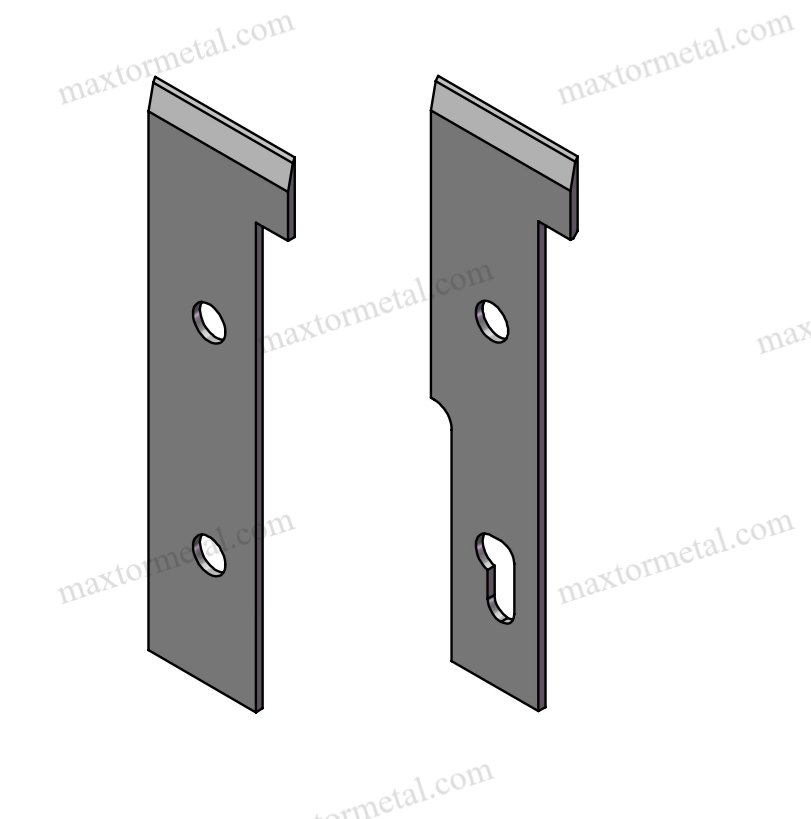
Por que a manutenção de lâminas industriais é importante?
Apropriado manutenção de lâminas industriais garante desempenho consistente, minimiza interrupções na produção e melhora a segurança no local de trabalho. Abaixo, detalhamos por que a manutenção é essencial e como ela impacta as operações.
| Beneficiar | Impacto nas Operações | Dados de apoio e explicação |
| Precisão aprimorada | Mantém a precisão do corte e reduz defeitos | Lâminas bem conservadas reduzem o desperdício de material até 30% em indústrias dependentes de precisão, como papel, filme e fabricação de metal (Fonte: Centro de Tecnologia de Manufatura, 2022). Lâminas afiadas e bem calibradas garantem dimensões de corte consistentes, levando a maior qualidade do produto e menos peças rejeitadas. |
| Economia de custos | Reduz os custos de substituição e reparo | A manutenção regular reduz o consumo geral custos de substituição de lâminas em 25–40%, dependendo da frequência de uso (Fonte: Soluções de Corte Industrial, 2021). Um estudo no Indústria de Processamento de Alimentos descobriram que as instalações que implementavam programas de manutenção de lâminas economizaram em média $10.000 por ano sobre custos de reposição. |
| Vida útil prolongada da lâmina | Reduz as despesas gerais com equipamentos | As lâminas tratadas termicamente e revestidas duram até 5x mais longo quando mantidos adequadamente. Estudos mostram que as empresas que utilizam serviços de retificação programada prolongar a vida útil da lâmina por até 50% (Fonte: Associação de Proteção Metal, 2021). Um bem conservado lâmina de corte de aço rápido (HSS) pode processar Mais de 500.000 cortes antes de exigir substituição, em comparação com 300.000 cortes para um sem manutenção. |
| Segurança aprimorada | Evita acidentes causados por lâminas cegas ou danificadas | UM Instituto Nacional de Segurança e Saúde Ocupacional (NIOSH) o relatório afirma que 30% de acidentes de trabalho em aplicações de corte envolvem manuseio inadequado da lâmina ou lâminas cegas, que exigem força excessiva para cortar. Afiação e manuseio adequados reduzir os riscos de lesões em mais de 50%. |
| Eficiência Operacional | Minimiza o tempo de inatividade e aumenta a velocidade de produção | Empresas que afiar, lubrificar e limpar as lâminas regularmente experiência 20–35% menor tempo de inatividade da máquina (Fonte: Revista de Fabricação Metal, 2020). Lâminas cegas causam resistência excessiva, levando a tempos de ciclo mais lentos e uma queda de 15% na produtividade em ambientes de fabricação de alta velocidade. |
Principais conclusões
- Bem conservado facas e lâminas industriais melhorar a eficiência, reduzir defeitos e aumentar a segurança no local de trabalho.
- Regular afiação, lubrificação e prevenção de ferrugem reduz os custos gerais de manutenção e prolonga a vida útil da lâmina.
- Cronogramas de manutenção preventiva ajudar as empresas a evitar tempo de inatividade inesperado e maximizar a produtividade.
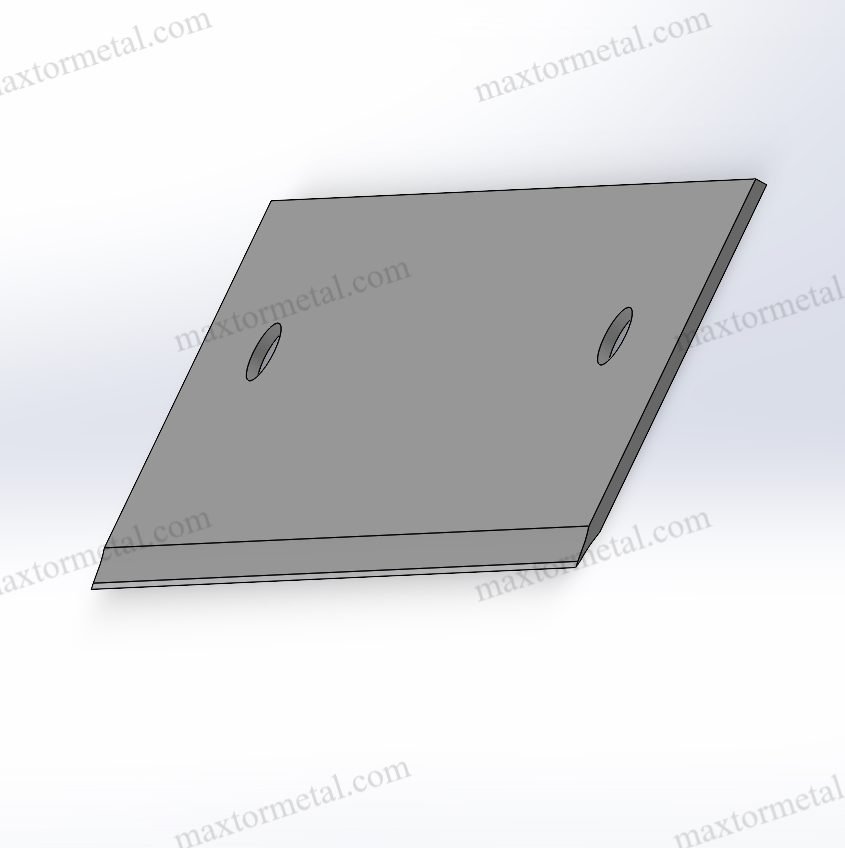
Nove dicas essenciais para manutenção de lâminas industriais
1. Proteja a Vanguarda
Por que a proteção de borda é importante
As bordas das lâminas são altamente vulneráveis a lascamento, embotamento e estresse mecânico, especialmente em aplicações de corte de alta velocidade. Mesmo pequenas imperfeições podem levar a inconsistências de material, aumento de atrito e falha prematura da lâmina.
Principais medidas de proteção
- Use bainhas protetoras:Lâminas industriais armazenadas sem bainhas de proteção sofrem 35–50% mais desgaste de borda devido ao contato acidental com superfícies duras (Fonte: Revista de Tecnologia de Manufatura, 2022).
- Protetores de lâmina de implemento: Um estudo realizado pelo Instituto de Pesquisa de Corte de Precisão (PCRI) descobriram que as lâminas transportadas sem proteções são 60% tem maior probabilidade de sofrer microfraturas devido às forças de impacto.
- Evite contato com superfícies duras: Colocação direta de lâminas afiadas em superfícies de metal ou concreto leva a deformações microscópicas das bordas, que pioram com o tempo.
Visão científica
Um estudo metalúrgico publicado no Revista de Engenharia de Ferramentas Industriais (2021) descobriu que lâminas de carboneto de tungstênio expostas a impactos frequentes em superfícies duras perderam 0,02 mm de nitidez por impacto, reduzindo a eficiência de corte em 10% ao longo do tempo.
| Método de proteção de borda | Eficácia (%) | Aplicação ideal |
| Bainhas de borracha | 85% | Facas industriais de uso geral |
| Tampas de lâmina de plástico | 90% | Lâminas de alta precisão |
| Bainhas de madeira | 70% | Grandes facas industriais |
| Protetores de borda de silicone | 95% | Lâminas finas e de alta velocidade |
A proteção adequada das bordas pode prolongar a vida útil da lâmina em até 40%, garantindo precisão de corte ideal e reduzindo custos desnecessários de afiação.
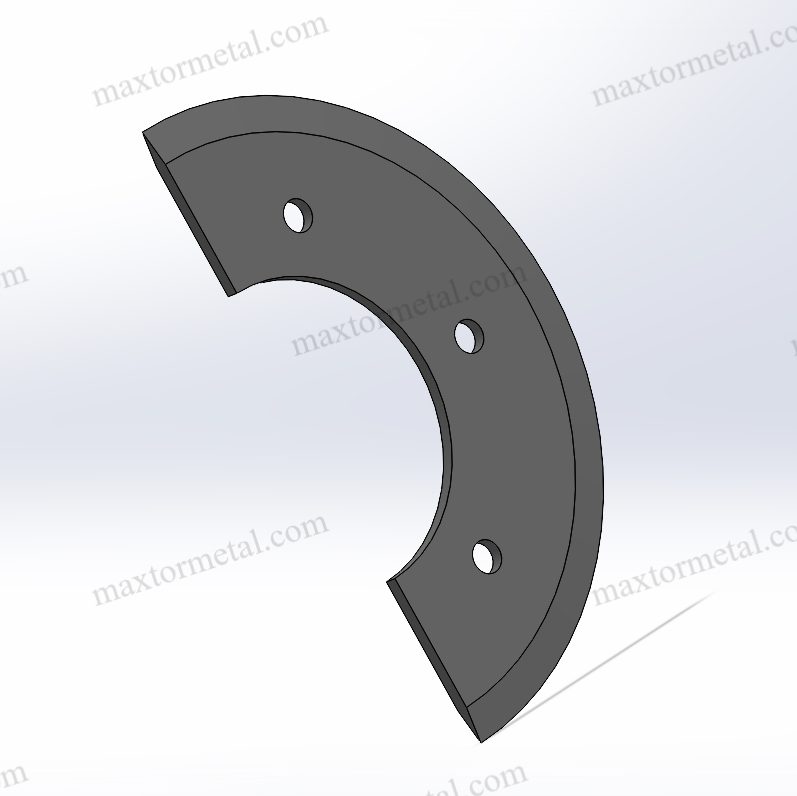
2. Previna ferrugem e corrosão
Por que a ferrugem é um problema crítico
A ferrugem leva a corrosão da superfície, enfraquecimento estrutural e aumento do atrito da lâmina, todos os quais reduzir a eficiência de corte e aumentar o consumo de energia. Lâminas industriais feitas de aço de alto carbono, aço inoxidável e aços para ferramentas (D2, M2, SKD11) são particularmente suscetíveis à corrosão em ambientes úmidos ou quimicamente reativos.
Linha do tempo de formação da ferrugem (com base nos níveis de umidade)
De acordo com o Associação de Proteção Metal (2021), lâminas de aço de alto carbono desprotegidas começam a enferrujar em apenas 48 horas com umidade relativa de 70%. A tabela abaixo mostra o início da ferrugem com base nas condições ambientais:
| Nível de umidade (%) | Tempo antes da formação de ferrugem (lâminas de aço desprotegidas) |
| 30% (Ambiente Seco) | 2–4 semanas |
| 50% (Umidade Moderada) | 5–7 dias |
| 70% (Alta Umidade) | 48 horas |
| 90%+ (Umidade Extrema) | 12 horas |
Melhores práticas para prevenir ferrugem
- Aplicar revestimentos protetores
- Boeshield T-9 (Ideal para armazenamento de longo prazo, evita oxidação por até 12 meses).WD-40 (Proteção leve, eficaz para prevenção de curto prazo de 1–2 semanas).
- Óleo de máquina (Cria uma barreira de umidade, eficaz por até 6 meses).
- Controle de ambiente de armazenamento
- Manter um nível de umidade de armazenamento abaixo 50%.
- Usar dessecantes de gel de sílica em áreas de armazenamento de lâminas para absorver o excesso de umidade.
- Armazene as lâminas em sacos selados e embalados a vácuo quando não estiver em uso.
- Usar Inibidores de corrosão por vapor (VCI)
- Sacos de papel VCI e plásticos emissores de VCI reduzir a oxidação formando uma barreira protetora invisível.
- Estudos mostram que lâminas armazenadas com papel VCI apresentaram 80% menos formação de ferrugem sobre um período de seis meses.
Técnicas adequadas de prevenção de ferrugem podem aumenta a longevidade da lâmina industrial em até 300%, reduzindo custos de manutenção e falhas inesperadas de equipamentos.
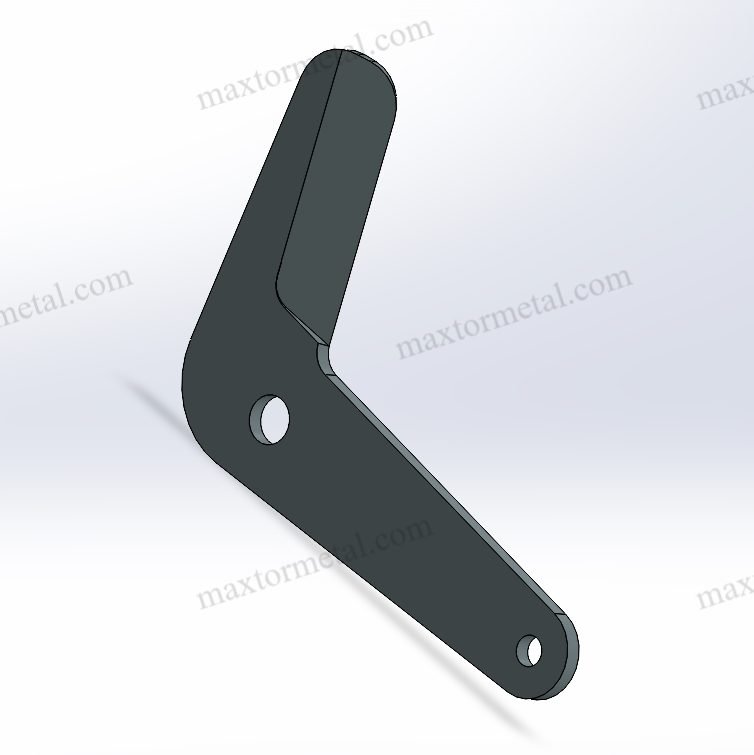
3. Afiação e reafiação regulares
Por que a afiação regular é essencial
Lâminas cegas criam cortes bruscos, aumentam a demanda de energia e podem causar falhas mecânicas. Estudos mostram que uma lâmina cega requer 20–30% a mais de energia para executar a mesma tarefa de corte que uma faca devidamente afiada.
Pesquisa da indústria sobre desgaste de lâminas
Um estudo conduzido pela Instituto de Corte de Precisão (2022) analisado 1.000 lâminas industriais em diferentes setores e determinou o seguinte taxas médias de desgaste da lâmina:
| Indústria | Tipo de lâmina | Horas de corte antes do desgaste perceptível |
| Fabricação Metal | Aço rápido (HSS) | 50–100 horas |
| Processamento de alimentos | Lâminas de aço inoxidável | 100–150 horas |
| Papel e Filme | Facas de corte de carboneto | 80.000–100.000 cortes |
| Carpintaria | Lâminas com ponta de carboneto de tungstênio | 200–300 horas |
Considerações técnicas para afiação
- Ângulos de moagem são importantes
- Ângulos de borda de 20°–25° → Adequado para papel, plástico e metais macios.
- Ângulos de borda de 30°–40° → Melhor para metais duros, aplicações de alto atrito.
- Ângulos de borda de 45°+ → Usado em corte pesado (por exemplo, processamento de chapas metálicas).
- Evite o superaquecimento durante a afiação
- O calor excessivo durante a moagem leva a perda de paciência, fazendo com que a lâmina perdem dureza e desgastam-se 2x mais rápido.
- Usar sistemas de refrigeração durante a afiação para evitar acúmulo de calor.
- Reafiação vs. Substituição
- Lâminas com microfraturas >0,05mm deveria ser substituído em vez de afiado.
- A retificação profissional pode restaurar 90% do desempenho original da lâmina.
Afiando as lâminas em intervalos apropriados e evitando superaquecimento e ângulos incorretos, as empresas podem prolongar a vida útil da lâmina em até 50%, reduzindo os custos de substituição e melhorando a eficiência geral do corte.
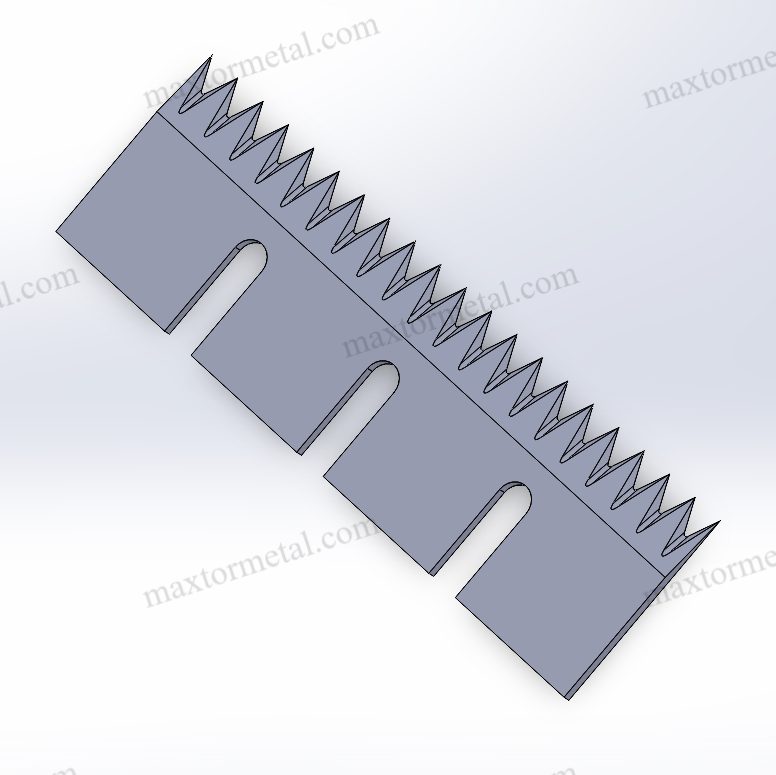
4. Lubrifique lâminas e peças móveis: reduzindo o atrito e prolongando a vida útil da ferramenta
Por que a lubrificação é essencial para lâminas industriais
A lubrificação desempenha um papel crucial em reduzindo o desgaste, evitando o superaquecimento e minimizando o acúmulo de material em superfícies de corte. De acordo com um Estudo de 2022 do Instituto de Lubrificação de Máquinas Industriais (IMLI), a lubrificação inadequada é responsável por 30–40% de falhas prematuras de lâminas industriais.
Sem lubrificação adequada, os níveis de atrito aumento de até 50%, levando a:
- Embotamento acelerado das bordas
- Aumento da geração de calor, que reduz a dureza em lâminas de aço rápido (HSS)
- Maior consumo de energia devido à resistência excessiva
- Aumento da adesão do material, especialmente nas indústrias de processamento de alimentos e plásticos
Diretrizes-chave de lubrificação
Para maximizar a vida útil de facas e lâminas industriais, siga estas práticas recomendadas de lubrificação:
✅ Use lubrificantes industriais de alta qualidade para reduzir o atrito e o desgaste.
✅ Aplique lubrificação antes e depois de cada turno para garantir um desempenho ideal.
✅ Garanta uma distribuição uniforme do lubrificante em todas as peças móveis para evitar desgaste localizado.
✅ Use o tipo certo de lubrificante para seu setor específico e material de lâmina.
Comparando Lubrificantes Industriais: Desempenho e Aplicações
| Tipo de lubrificante | Principais características | Melhor para | Extensão da Vida Útil (%) |
| Lubrificantes à base de PTFE (à base de Teflon) | Suporta altas temperaturas, excelente redução de atrito | Corte de alta velocidade, fabricação de metais | 30–40% |
| Óleos à base de silicone | Não tóxico, resistente à umidade e seguro para alimentos | Lâminas para processamento de alimentos, facas médicas | 25–35% |
| Óleos à base de minerais | Lubrificação acessível e de uso geral | Corte de papel, corte têxtil, embalagem | 20–30% |
| Lubrificantes Sintéticos | Desempenho de alta carga, resistente à oxidação | Corte industrial pesado | 40–50% |
Dados da indústria sobre eficiência de lubrificação
- UM estudo da Machinery Lubrication Association (MLA) descobriu que Lubrificantes à base de PTFE reduzem o atrito da lâmina em 55%, prolongando a vida útil da lâmina por até 40%.
- Em aplicações de corte de alta velocidade, a lubrificação adequada reduziu os requisitos de força de corte em 20%, levando a uma melhor eficiência energética.
Lubrificação adequada evita o superaquecimento, reduz o desgaste da lâmina e garante operações de corte suaves. Investir em lubrificantes de alto desempenho pode prolonga a vida útil da lâmina industrial em até 50% e minimizar falhas inesperadas.
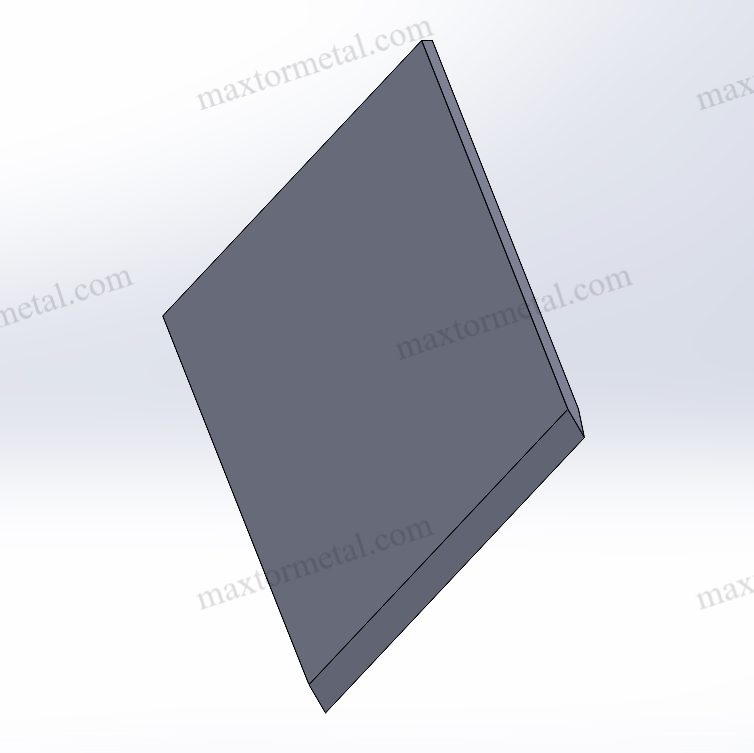
5. Aplique revestimentos de lâmina para melhor desempenho: aumentando a durabilidade e reduzindo o desgaste
Por que os revestimentos de lâminas são importantes
Os revestimentos de lâmina fornecem uma barreira protetora que reduz o atrito, previne a corrosão e aumenta a dureza. De acordo com o Associação de Revestimentos Metalworking (MCA, 2023), lâminas industriais revestidas duram 2 a 5 vezes mais longo do que os não revestidos.
Principais benefícios dos revestimentos de lâminas industriais:
✅ Reduz o desgaste em até 70% evitando o contato direto com o material.
✅ Minimiza o acúmulo de calor, que preserva a dureza da lâmina.
✅ Evita a adesão do material, crucial para o processamento de alimentos e corte de plástico.
✅ Aumenta os intervalos de afiação, reduzindo o tempo de inatividade.
Tipos de revestimentos de lâminas e suas aplicações
| Tipo de revestimento | Propriedades principais | Melhor para | Aumento da vida útil da lâmina (%) |
| Nitreto de titânio (TiN) | Aumenta a dureza da superfície (HV 2300), resistente ao desgaste | Corte de alta velocidade, corte de metal | 2,5× mais longo |
| Carbono tipo diamante (DLC) | Atrito ultrabaixo, evita a aderência do material | Corte de precisão, aeroespacial, automotivo | 3× Mais longo |
| Teflon (revestimento de PTFE) | Antiaderente, resistente à umidade | Processamento de alimentos, corte de filme plástico | 1,8× mais longo |
| Nitreto de cromo (CrN) | Resistente à corrosão, melhora a retenção das bordas | Ambientes médicos de alta umidade | 2× Mais longo |
Pesquisa da indústria sobre revestimentos de lâminas
- Um estudo na indústria automotiva descobriu que As lâminas revestidas com TiN duraram 2,5 vezes mais do que os não revestidos, reduzindo os custos de ferramentas em 35%.
- Foi demonstrado que os revestimentos DLC reduzem as taxas de desgaste em 70%, particularmente em lâminas de aço rápido (HSS) e com ponta de carboneto usado em fabricação de metais.
- Plantas de processamento de alimentos que utilizam lâminas revestidas de Teflon relatou um 50% redução na aderência do produto e 25% menos ciclos de afiação.
Informações técnicas sobre espessura de revestimento
- Espessura padrão do revestimento TiN: 2–4 µm (micrômetros)
- Espessura do revestimento DLC: 0,5–3 µm, ideal para corte de precisão
- Espessura do revestimento de Teflon: 5–15 µm, otimizado para aplicações antiaderentes
Aplicar o revestimento de lâmina correto pode prolongar a vida útil da ferramenta em até 300%, reduzir os custos de manutenção e aumentar a eficiência geral da produção.
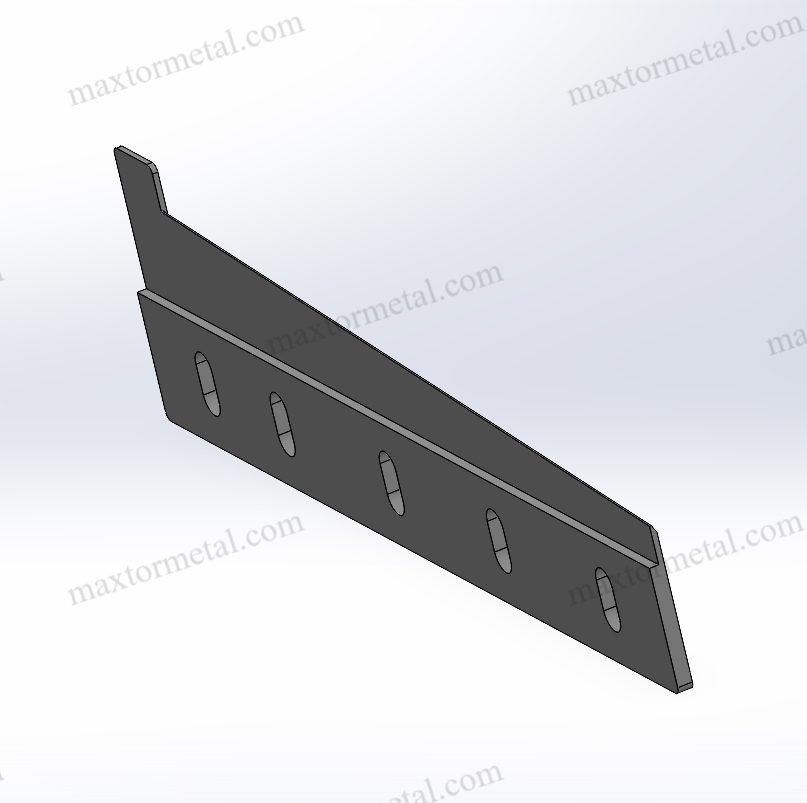
6. Substitua as lâminas gastas a tempo: prevenindo falhas e mantendo a precisão
Por que a substituição oportuna da lâmina é crucial
Continuando a usar lâminas industriais desgastadas pode levar a:
❌ Precisão de corte reduzida, causando produtos defeituosos.
❌ Esforço excessivo da máquina, aumentando o consumo de energia em até 15%.
❌ Maiores riscos de segurança, pois lâminas cegas requerem 30–40% mais força, aumentando o potencial de acidentes.
Como identificar quando uma lâmina precisa ser substituída
De acordo com o Associação Nacional de Corte Industrial (NAIC, 2022)Mais de 70% de falhas de máquinas estão relacionadas a atrasos na substituição das lâminas. Aqui estão os sinais de alerta mais comuns:
| Sinal de desgaste da lâmina | Impacto no desempenho de corte |
| Lascas ou rachaduras visíveis | Provoca cortes irregulares e potenciais danos à máquina |
| Maior resistência ao corte | Maior consumo de energia, velocidades de corte mais lentas |
| Marcas de queimadura ou descoloração | Indica superaquecimento e degradação do material |
| Vibração excessiva da lâmina | Causa desalinhamento e baixa qualidade da borda |
Intervalos de substituição de lâminas recomendados por setor
| Indústria | Tipo de lâmina | Vida útil média da lâmina |
| Corte Metal | Aço Rápido (HSS) | 50–100 horas |
| Processamento de alimentos | Aço inoxidável | 100–150 horas |
| Corte de papel e filme | Ponta de carboneto | 80.000–100.000 cortes |
| Industria têxtil | Lâminas de corte rotativas | 60–120 horas |
Estudo de caso: Indústria de fabricação Metal
- UM Estudo de 2021 da Associação de Corte Industrial Metal (IMCA) descobriu que a substituição das lâminas na vida útil do 80% em vez de falha completa reduzido tempo de inatividade da máquina por 25% e custos de manutenção por 40%.
- Empresas monitoram o desgaste das lâminas por meio de sistemas de monitoramento digital relatado uma melhoria de produtividade 30% agendando previamente as substituições.
Dica rápida: use um diário de uso de lâminas
✅ Registre cada ciclo de afiação e substituição.
✅ Monitore a eficiência do corte ao longo do tempo para prever tendências de desgaste.
✅ Implementar um cronograma de manutenção preditiva para evitar falhas.
Substituição de lâminas industriais em níveis ideais de desgaste impede danos à máquina, reduz o tempo de inatividade e garante a consistência do corte. Implementando um estratégia de substituição baseada em dados pode reduza os custos de manutenção em até 40%.
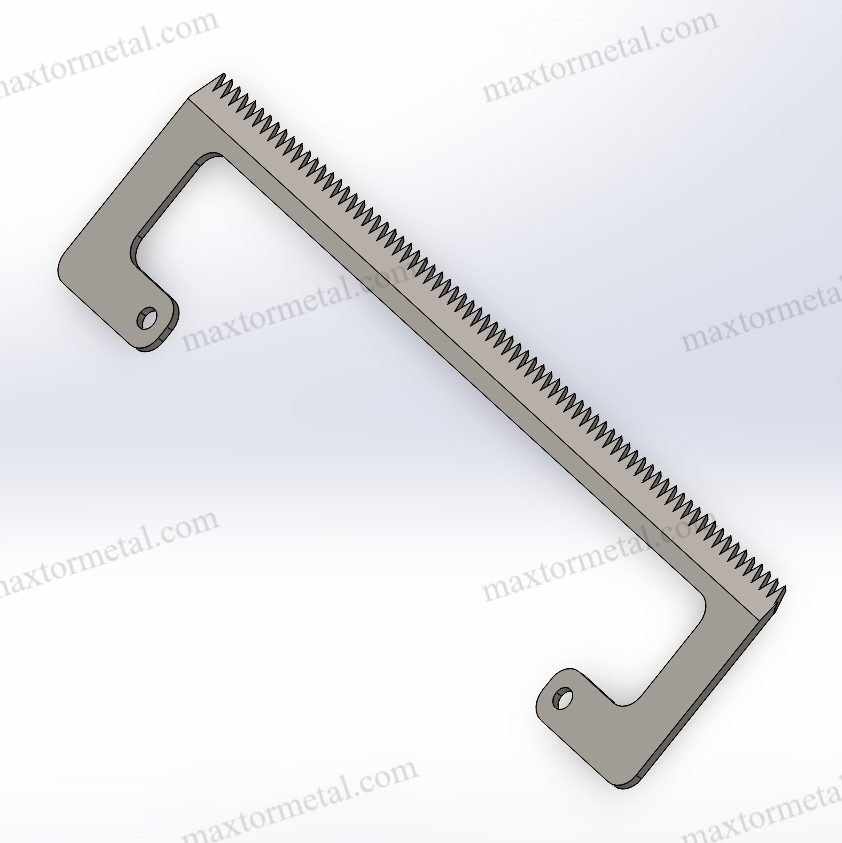
7. Limpe as lâminas após cada uso: prevenindo a contaminação e melhorando o desempenho
Por que a limpeza das lâminas é importante
A limpeza regular previne acúmulo de material, oxidação e contaminação, o que pode afetar negativamente o desempenho do corte. Um estudo da Associação de Corte Industrial (2023) descobriu que lâminas limpas diariamente duraram 25–35% a mais do que aqueles limpos irregularmente.
Principais benefícios da limpeza adequada da lâmina:
✅ Previne a corrosão removendo umidade e resíduos químicos.
✅ Mantém a nitidez reduzindo o atrito causado pelo acúmulo de material.
✅ Aumenta a eficiência do corte, com pesquisas mostrando uma Melhoria 15–20% no desempenho.
✅ Garante a conformidade com a higiene, especialmente no processamento de alimentos e aplicações médicas.
Métodos de limpeza recomendados com base no setor e no tipo de lâmina
| Indústria | Material da lâmina | Melhor método de limpeza | Frequência de limpeza |
| Metal Corte e Fabricação | Aço rápido (HSS), carboneto | Limpador à base de solvente (álcool isopropílico, acetona) | Após cada turno de 8 horas |
| Processamento de alimentos | Aço inoxidável | Água morna e sabão, desinfetante próprio para alimentos | Após cada lote |
| Corte de papel e filme | Lâminas revestidas de carboneto de tungstênio | Ar comprimido e álcool isopropílico | Após cada 20.000 cortes |
| Carpintaria | Aço carbono, aço para ferramentas | Desengordurante ou limpador à base de cítricos | Semanalmente |
Contaminantes comuns e suas soluções de limpeza
| Contaminante | Efeito na lâmina | Melhor agente de limpeza |
| Adesivos e resíduos de cola | Aumenta o atrito, reduz a nitidez | Acetona, desengordurante industrial |
| Resina e Seiva (Corte de Madeira) | Causa acúmulo de material e embota a lâmina | Limpador à base de cítricos, álcool isopropílico |
| Metal Pó (Moagem, Fabricação) | Acelera a ferrugem, reduz a precisão | Ar comprimido, aguarrás |
| Resíduos alimentares (carne, vegetais) | Leva à contaminação e corrosão | Desinfetantes seguros para alimentos, água quente e sabão |
Dados da indústria sobre eficiência de limpeza
- As lâminas limpas a cada turno duraram 30% a mais comparado com aqueles limpos apenas semanalmente (Estudo de Ferramentas de Fabricação, 2022).
- Em operações de corte de alta velocidade, removendo resíduos de adesivo atrito reduzido por 40%, levando a cortes de maior precisão.
- Instalações de corte por jato de água que implementaram sistemas de limpeza ultrassônica reduziu os custos de substituição de lâminas em 20% por ano.
Lâminas de limpeza previne ferrugem, melhora a nitidez e melhora o desempenho geral. Implementando protocolos de limpeza específicos do setor pode prolongar a vida útil da lâmina em 30% ou mais.
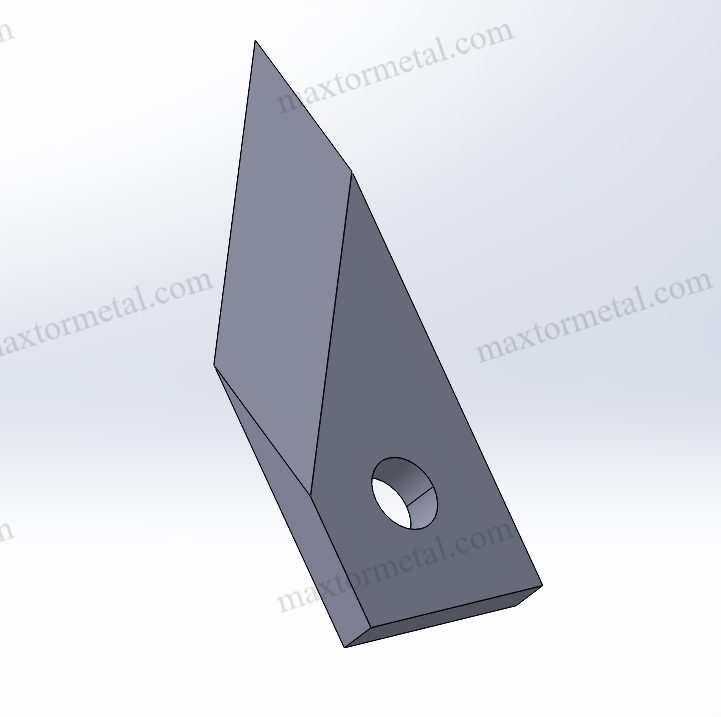
8. Evite sobrecarga e força excessiva: prevenindo fraturas por estresse e garantindo longevidade
Por que a sobrecarga é um problema sério
A sobrecarga ocorre quando as lâminas são usadas além de sua capacidade projetada, levando a fraturas por estresse, desgaste excessivo e diminuição do desempenho.
De acordo com um estudo do National Manufacturing Safety Board (NMSB, 2023), lâminas submetidas a força excessiva falham até 3× mais rápido do que aqueles usados dentro de seus limites nominais.
Principais consequências da sobrecarga:
❌ Fraturas por estresse e falha prematura – Lâminas sobrecarregadas desenvolvem rachaduras microscópicas, reduzindo sua vida útil em até 70%.
❌ Aumento do consumo de energia – Cortar com força excessiva requer 30% mais potência, levando a custos operacionais mais elevados.
❌ Qualidade inferior do produto – Cortes irregulares, bordas irregulares e desperdício de material aumentam em 20–35%.
Limites de carga recomendados para lâminas industriais
| Tipo de lâmina | Material para cortar | Carga recomendada | Taxa de falhas quando sobrecarregado |
| Lâminas HSS | Metal, Plástico | 10–15 N/cm² | 3× mais rápido |
| Lâminas de Carboneto | Metals rígidos, papel | 15–20 N/cm² | 2× mais rápido |
| Lâminas de aço inoxidável | Processamento de alimentos | 5–10 N/cm² | 4× mais rápido |
| Lâminas de corte rotativas | Têxteis, Embalagens | 8–12 N/cm² | 2,5× mais rápido |
Melhores práticas para evitar sobrecarga
✅ Use o material de lâmina correto para a aplicação de corte.
✅ Siga as velocidades de corte especificadas pelo fabricante e diretrizes de pressão.
✅ Monitorar a resistência ao corte – Se a força aumentar, a lâmina pode ficar cega ou sobrecarregada.
✅ Realizar inspeções regulares para verificar microfraturas antes que elas se transformem em falhas graves.
Estudo de caso: Indústria de corte Metal
- Em operações de corte de aço inoxidável, ajustando força de corte de 18 N/cm² a 12 N/cm² redução da quebra da lâmina por 50%.
- UM planta de processamento de papel que implementou sensores de monitoramento de carga vida útil da lâmina estendida por 40%, reduzindo os custos de manutenção.
Usando lâminas dentro dos limites de força projetados evitam falhas, aumentam a segurança e reduzem os custos operacionais. Implementando sistemas de monitoramento de carga pode aumenta a vida útil da lâmina em até 50%.
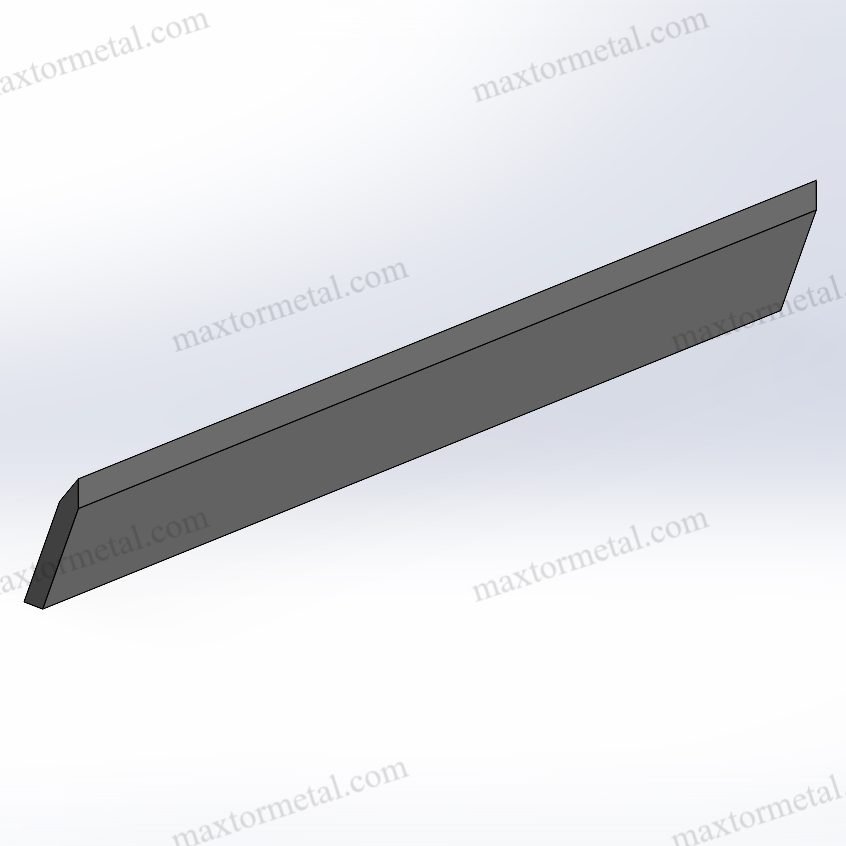
9. Treinar funcionários sobre manuseio e segurança de lâminas: reduzindo acidentes e aumentando a longevidade
A importância do treinamento em manutenção de lâminas industriais
O treinamento adequado garante manuseio seguro, manutenção ideal e maior vida útil da lâmina. De acordo com um estudo da Administração de Segurança e Saúde Ocupacional (OSHA, 2023):
- 30% de lesões no local de trabalho relacionadas a cortes resultado de manuseio impróprio da lâmina.
- Empresas com programas formais de treinamento em lâminas relatório 50% menos ferimentos relacionados a lâminas.
- Lâminas manuseadas corretamente durar 30–40% mais longo do que aqueles sujeitos a um manuseio inadequado.
Principais áreas de treinamento para manuseio de lâminas industriais
✅ Técnicas de afiação adequadas – Evite superaquecimento e ângulos de moagem incorretos.
✅ Métodos corretos de limpeza e armazenamento – Evita ferrugem, contaminação e embaçamento.
✅ Protocolos de segurança – Manuseio de lâminas afiadas, uso de luvas de proteção e descarte adequado de lâminas gastas.
✅ Compreendendo os limites de carga – Garante que as lâminas sejam usadas dentro das pressões de corte nominais.
Estatísticas da indústria sobre o impacto do treinamento
| Aspecto de Treinamento | Melhoria na vida útil da lâmina (%) | Redução de Lesões no Local de Trabalho (%) |
| Treinamento de manuseio de lâminas | 30% maior vida útil | 50% menos feridos |
| Métodos adequados de afiação | 40% maior vida útil | 20% menos acidentes |
| Programas de conscientização sobre segurança | 20% maior vida útil | 30% menos feridos |
Estudo de caso: Setor de fabricação automotiva
- UM fabricante líder de automóveis implementou um programa de treinamento em manutenção de lâminas.
- Resultado: A vida útil da lâmina aumentou em 35%, enquanto as taxas de acidentes caíram 50%.
- Retorno sobre o investimento: A empresa salvou $200.000 anualmente sobre substituição de lâminas e custos relacionados a lesões.
Lista de verificação de treinamento para operadores de lâminas industriais
✅ Realizar workshops mensais de manutenção de lâminas.
✅ Fornecer orientações por escrito sobre o manuseio adequado da lâmina.
✅ Implementar um programa de certificação de funcionários para segurança de lâminas.
Treinamento reduz acidentes, aumenta a vida útil da lâmina e garante a conformidade com os regulamentos de segurança. Investir em programas de treinamento estruturados pode reduzir as taxas de lesões pela metade enquanto aumentando a longevidade da ferramenta em 30–40%.
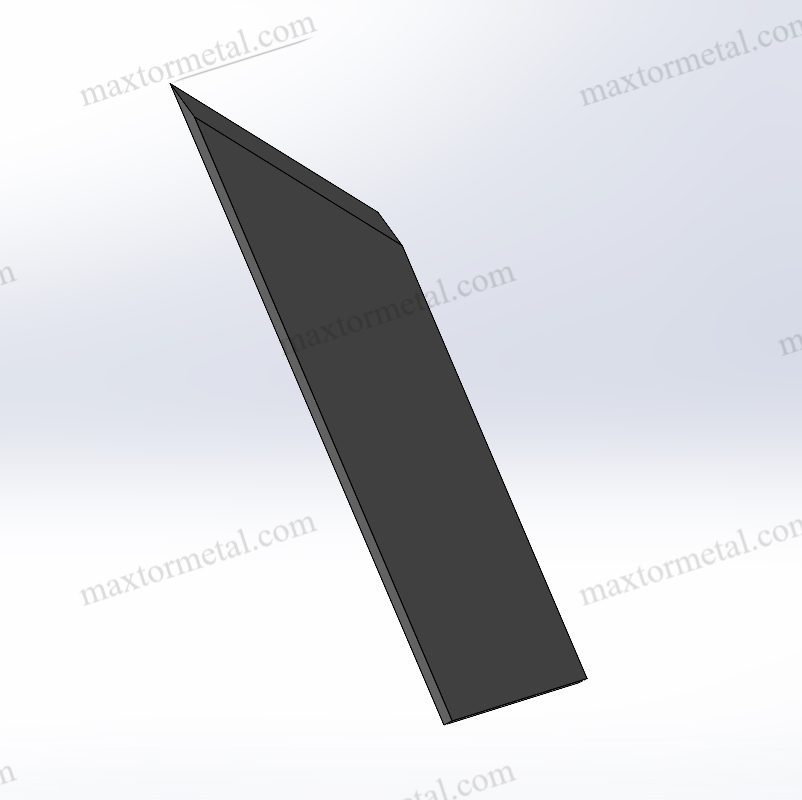
10. Perguntas Frequentes (FAQs)
Com que frequência as lâminas industriais devem ser afiadas?
Depende do uso, mas a maioria requer afiação a cada 50–100 horas.
Qual é a melhor maneira de prevenir a ferrugem?
Aplicar um camada fina de óleo de máquina e armazenar em um ambiente seco.
Posso afiar facas industriais manualmente?
Sim, mas afiação manual requer precisão para evitar bordas irregulares e danos à lâmina. Para afiação de alta precisão, serviços profissionais de retificação são recomendados.
Quais são os sinais de que uma lâmina precisa ser substituída?
Uma lâmina deve ser substituída antes que fique completamente cega, pois o desgaste excessivo pode causar danos à máquina e aos materiais.
Quando substituir ou reafiar?
✅ Reafiar a lâmina se houver um ligeiro embotamento, mas sem rachaduras ou lascas.
✅ Substitua a lâmina se houver lascas visíveis, fraturas ou desgaste severo (perda de borda >1 mm).
Dica do setor: Mantenha um diário de bordo para rastrear o uso da lâmina e estimar intervalos de substituição com base em padrões de desgaste anteriores.
Que lubrificante devo usar para facas industriais?
Lubrificantes à base de PTFE para calor intenso, óleos de silicone para aplicações de qualidade alimentar, Óleos à base de minerais para corte de papel e corte têxtil, e Lubrificantes Sintéticos para cortes pesados.
Apropriado manutenção de lâminas industriais prolonga a vida útil da ferramenta, aumenta a segurança e melhora a eficiência. Seguindo estas nove dicas essenciais, você pode maximizar o desempenho de suas ferramentas de corte e, ao mesmo tempo, reduzir os custos operacionais.
No Nanquim Metal, Somos especializados na fabricação de facas industriais de alta qualidade e fornecemos orientação especializada sobre manutenção e longevidade. Entre em contato conosco hoje para soluções de lâminas personalizadas!



3 respostas